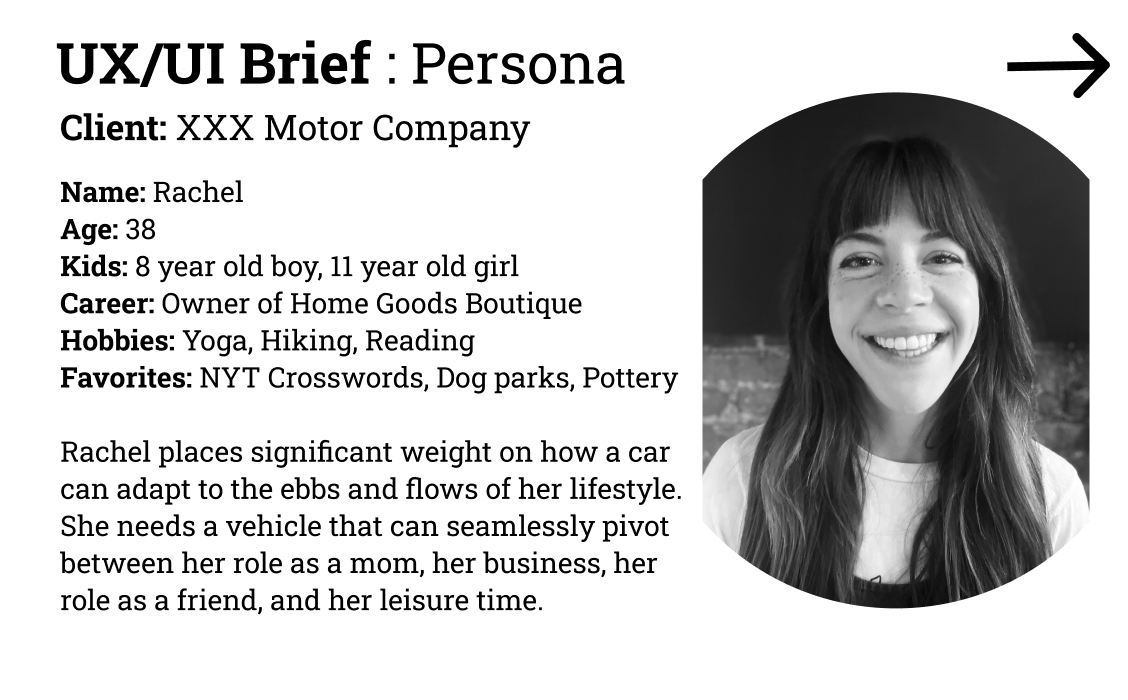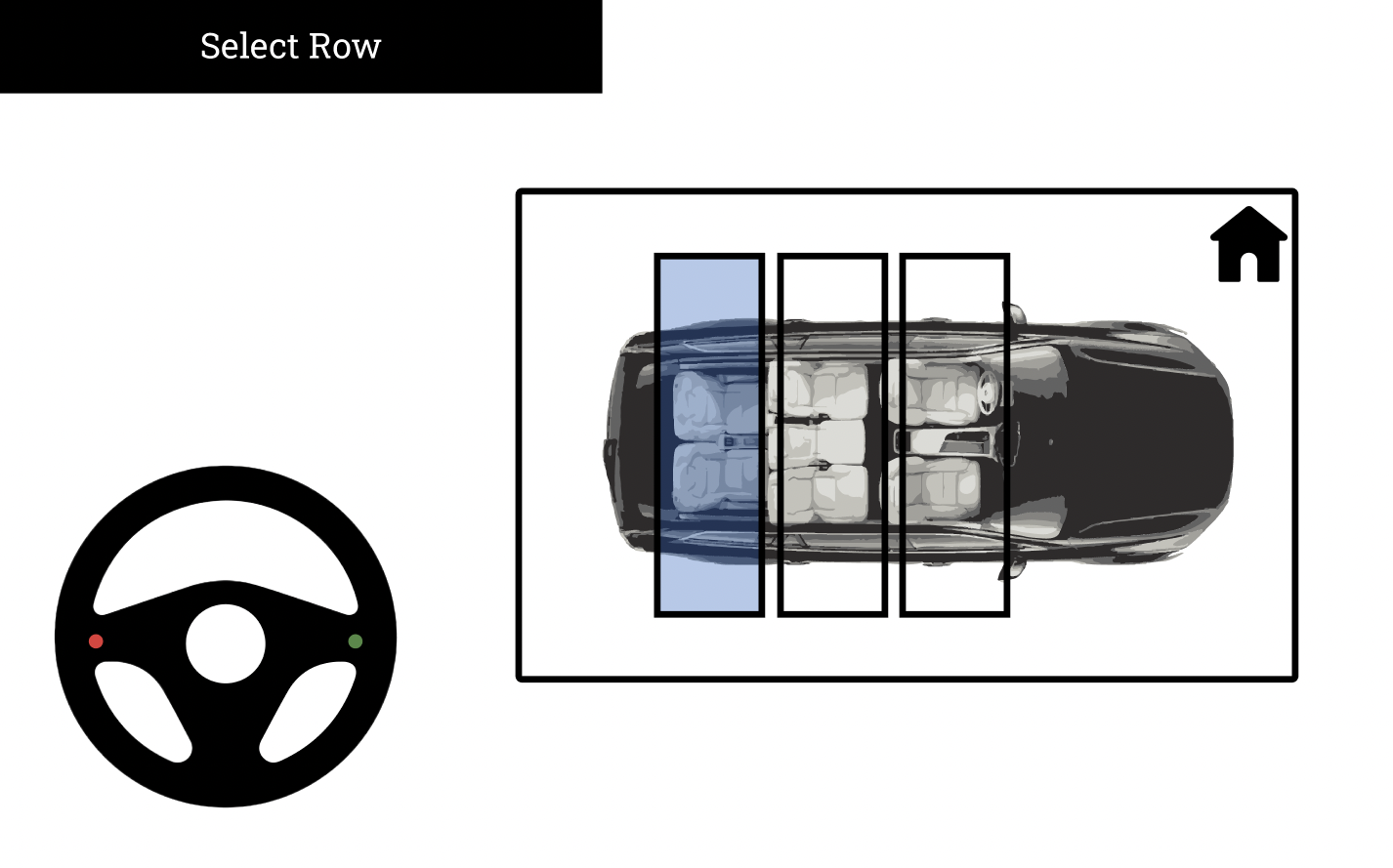Project Name— Automotive HMI Eye Tracking Interface
Type— Design / Research
Role: Project Manager / Design Consultant
About this project
As part of my work at Escalent, I collaborated with an advanced product design team at a major automotive company team to carry out iterative user research on a next-generation eye tracking interface design for cars. The prototype we worked on was a functional prototype allowing for a variety of features to be control with the users eyes and a steering wheel based input. Features modelled include camera control, media player, navigation and HVAC. As this project includes many early stage prototypes, disclosure of actual design and research materials is not permitted to avoid sharing any trade secrets. Below represents a stand-in lo-fidelity prototype of the product we designed and test. The study ran for 5 days on location at the companies proving grounds facility and had a study population of 15 respondents. The total duration was roughly 6 hours for the respondents and required roughly 5 hours of moderation by me.
Deliverables
My involvement with this project was not in overall design of this system, but rather as a design consultant involved at key moments during the design cycle. For this work, we aimed to deliver the client a succinct Powerpoint report for upper management to make decisions on investment into the products future. This included recommendations for the overall design and recommendations for individual features, default configuration recommendation for the GUI, sketches for new feature m0dels, suggestions for naming conventions, and general sentiment analysis for the U.S. market. Upon delivery, client immediately made some of the proposed changes and the project worked its way into the general product development pipeline with design team from the advanced product side.
Process
As the project manager and key point of contact with the client, I carried out the full suite of tasks associated with PMing an intensive, future-looking research project. Tasks include: Recruitment, Questionnaire development, workshop design, workshop moderation, usability testing and task based exploration, implications for design, and generation of key insights. Of these, I can share two different workshops I conducted.
Workshop 1: Card sorting and GUI configuration
This workshop involved 4 cohorts of participants being mailed example features of the interface. Prior to arriving at the research, respondents were asked to sort features on a paper prototype that was mailed ahead of time. Each user then sorted the features into the most logical user interface layout for them and were asked to write a few sentences about why they ordered the way they did. When they arrived, we used this as an icebreaker exercise before we hopped into the functional prototypes. This was also used to understand the positionality of each respondent; what types of motivations that had that were unique to them that could affect the types of feedback they’d give.
Workshop 2: In-vehicle demonstration and prototype evaluation
After the respondents had the chance to share with us a bit about themselves, we got into the vehicle where we conducted a low-speed usability evaluation and feature brainstorm. This required me to take each of the respondents on a 30 minute drive around the track, where they would test the eye-tracking prototype’s responsiveness, feature set, and some novel design elements while driving. As you can imagine, we found some bugs with our prototype that had not been worked out (functionality with glasses, calibration in extreme heat and direct sun, and so on.) Following the drive, I lead a design charrette to capture the success moments and pain points for the prototype. We used post-its to group these into a matrix showing impact of overall experience and perceived importance.





